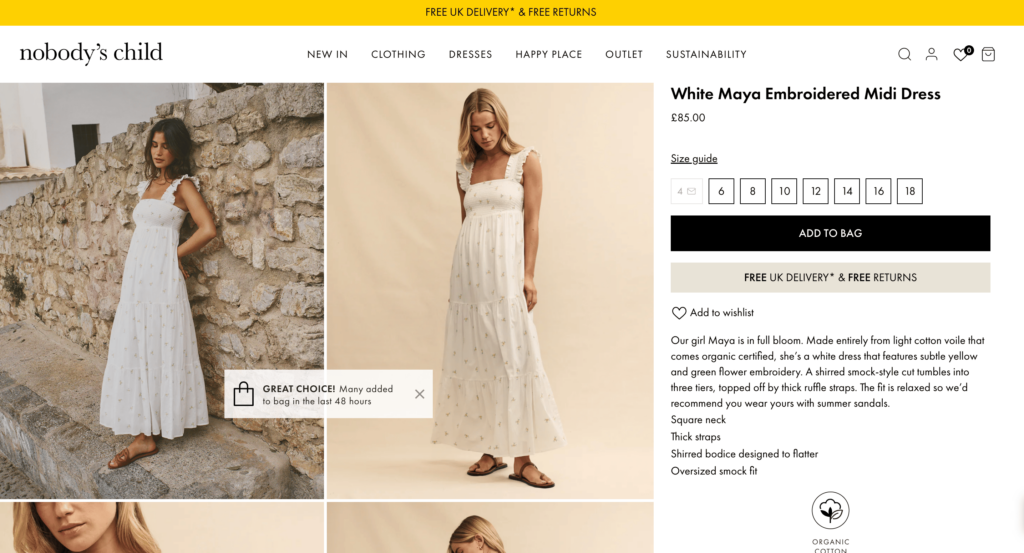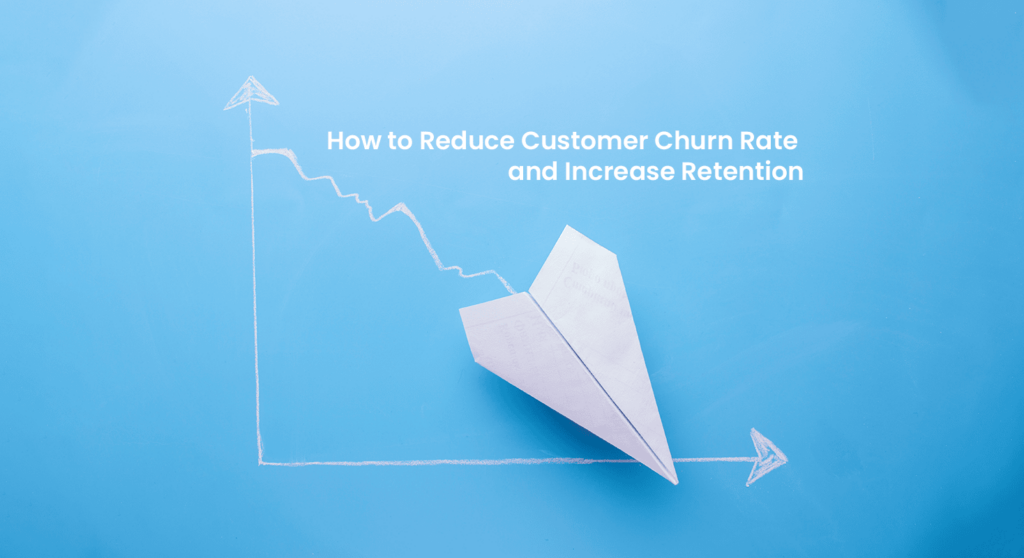You spend a lot of time and resources on new customer acquisition. Keeping those customers happy and loyal is just as important. Generally, retaining existing customers costs a lot less than acquiring new ones. So, it’s not surprising that minimising churn and securing high customer retention is a key goal for many retailers and brands.
Churn happens when a customer ends her/his relationship with your company. It is usually calculated as the percentage of customers who stop using a product or service within a specified time frame.

Churn rate is an important metric for measuring customer retention and a helpful indicator of areas to improve. This metric is especially important if you’re selling subscription-based products or rely heavily on recurring revenue from repeat customers.
Read on to learn more about the causes and types of customer churn and how to reduce your churn rate and increase retention.
Causes and Types of Customer Churn
Different types of customer churn are typically caused by a variety of factors and can have different symptoms for a business. Here are some common reasons for customer churn.
- Product quality: Customers are not satisfied with the quality of the product or service.
- Market fit: Company is targeting and selling its products to the wrong customer profiles.
- Price: The perceived value of the product does not match the price, or customers can find more cost-effective products or services elsewhere.
- Competitive offerings: Competitors offer similar or better products at a lower price.
- Customer experience: Customers do not appreciate the customer experience, or do not feel valued, and are generally unhappy with the service they receive.
- Changing customer needs: Customer needs and preferences evolve, and they no longer need a particular product.
The symptoms of customer churn can be devastating to a business, typically resulting in declining revenue and loss of key customers. Identifying the causes and symptoms of churn is essential to take proactive measures to reduce churn and retain valuable customers.
Why is reducing customer churn rate important?
A high churn rate generally means that a large number of customers are leaving your business or stopping using your products, which can lead to reduced revenue and growth. Customer churn matters because it generally shows the rate at which you are retaining your customers. Reducing the customer churn rate is important for several reasons, including:
- Revenue impact: Losing customers directly impacts revenue, and the cost of acquiring a new customer tends to be higher than keeping an existing one. By reducing churn, retailers and brands can maintain a more stable revenue stream and increase profitability.
- Customer lifetime value (CLV): Loyal customers often spend more money over time and are more likely to purchase additional products. By reducing churn, you can increase the lifetime value of your customers.
- Cost savings: Acquiring new customers is more expensive than retaining existing ones. Forrester and other analysts estimate that it costs about five times more to acquire new customers than to keep existing ones. Reducing churn can reduce these acquisition costs.
- Competitive advantage: A low churn rate is an indicator that customers are satisfied with your products and services. This can help you differentiate yourself from competitors, help attract new customers and maintain market share.
- Customer feedback: Retained customers can provide valuable feedback and insights that can help businesses improve their products, services, and overall customer experience. Understanding why customers are leaving can also provide insight into issues that should be addressed, helping to improve the business and retain more customers in the future.
- Brand reputation: High churn rates can indicate that customers are not satisfied with your products or service, which can lead to a negative impact on your brand reputation. A low churn rate, on the other hand, indicates that your customers are happy and satisfied.
How to reduce churn rate?
It’s critical to track and focus on reducing customer churn to improve your bottom line, increase customer lifetime value and stay competitive. Keeping the churn rate low requires a heightened focus on customer retention, and it is important to allocate budget and resources to strategies that focus on keeping your customers happy and loyal, as well as new customer acquisition. As with all other areas of your business, the right approach depends on your business model, products and market, but here are some strategies that you can use to reduce your customer churn rate:
- Understand why customers leave: Understanding why customers leave is the first step to reducing churn. By monitoring customer behaviour, conducting customer surveys and analysing feedback, you can gain valuable insights to help minimise churn.
- Monitor and predict churn: Use data analytics to monitor and track customer behaviour and engagement. This will help identify at-risk customers, allowing you to proactively prevent churn with tactics targeted specifically to re-engage them.
- Seek feedback: Continuous feedback and insights from customers, whether captured via surveys, reviews, or social media, can be used to improve products, services, and overall customer experiences, helping to reduce churn and increase retention over time.
- Improve the customer experience: Positive experiences encourage customers to return, and exceptional customer service is key to retaining customers. Brands and retailers should focus on resolving issues quickly, providing personalised experiences, ensuring that shopping and checkout are seamless and frictionless, and offering fast and cost-effective shipping as well as convenient returns.
- Offer value-added services and build strong connections: Offer additional services such as exclusive events, educational content, product support or community engagement to provide greater value and help build deeper connections with customers, making them less likely to churn.
- Build loyalty programs: Implement a loyalty program that rewards your customers for repeat purchases and desired actions. This can help customers feel valued and incentivise them to stay, thereby reducing churn. Typically, loyalty programs offer discounts, special offers, members-only free shipping, or access to exclusive events or experiences.
- Reinforce buying decisions: Leverage social proof messaging to help customers feel confident that they are making the right buying decisions. By showcasing that other customers are making the same choices, your customers will feel reinforced and more likely to stay loyal.

- Build brand advocates: Encourage satisfied customers to become brand advocates. Offer incentives for referrals and reviews to help attract new customers and reinforce loyalty among existing ones.
Reduce churn rate, increase retention and boost revenue
From fast-growing fashion brands to established DIY and home retailers and other retail industries, reducing customer churn and increasing retention should be a priority. Regardless of the industry, doing so successfully requires a combination of understanding customer needs, providing exceptional customer experiences, and continuously adding value to customers. By implementing these strategies, you can build stronger relationships with your customers, increase loyalty, and drive long-term growth.
Learn how Taggstar’s social proof messaging, recommendations and attribute messaging solutions help deliver exceptional customer experiences, boost confidence to buy and reinforce purchase decisions, ultimately resulting in improved customer retention and increased revenue.



